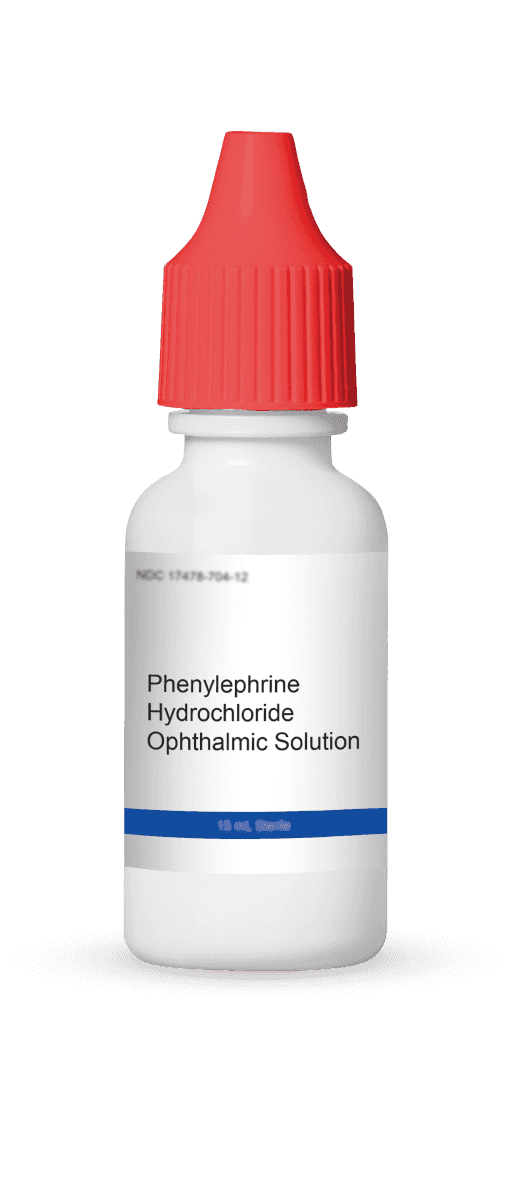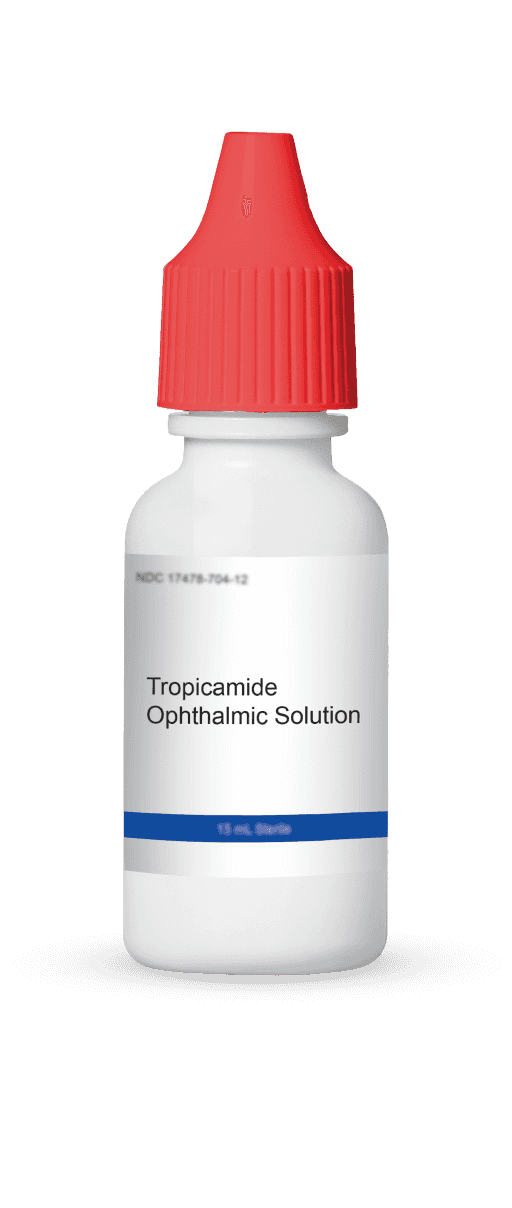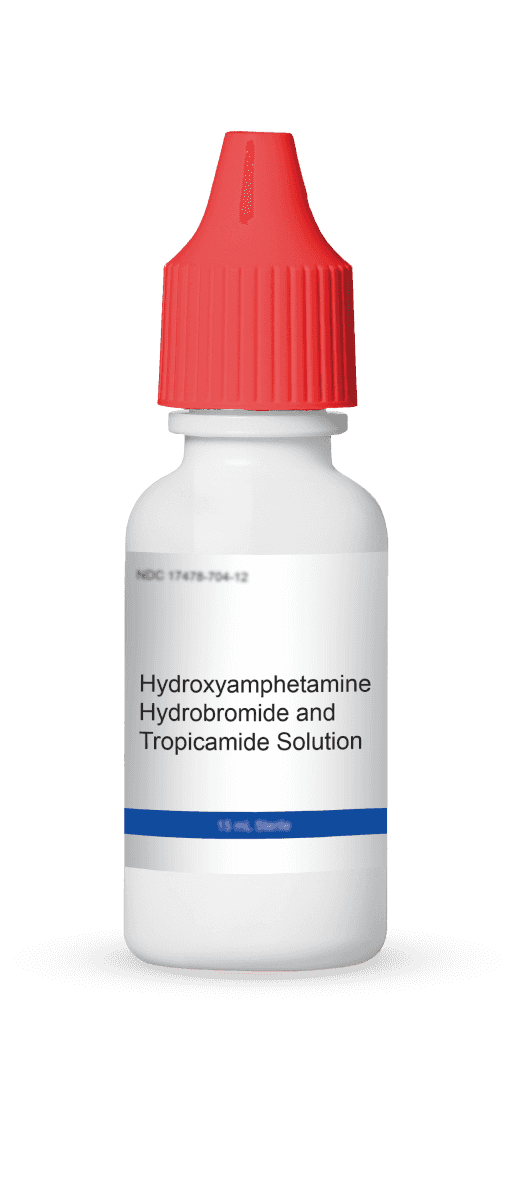
Rapid eye dilation reversal is possible1*
The only available FDA-approved eye drop to rapidly reverse dilation, generally by 90 minutes.1
RYZUMVI® was evaluated across 2 randomized, vehicle-controlled, double-masked studies in which patients (N=553) aged 12 to 80 years who had mydriasis induced by instillation of phenylephrine, tropicamide, or Paremyd® (hydroxyamphetamine hydrobromide and tropicamide) were administered 2 drops (study eye) or 1 drop (fellow eye) of either RYZUMVI or placebo one hour after instillation of the mydriatic agent. The primary endpoint was defined as the percent of study eyes returning to baseline pupil diameter (≤0.2 mm above baseline) at 90 min.1‑3
*The onset of action after administration of RYZUMVI generally occurs in 30 minutes, with the maximal effect seen in 60 to 90 minutes, and the effect lasting at least 24 hours.1
Percentage of patients
returning to ≤0.2 mm of
baseline pupil diameter1
- The study population had at least 1 scheduled post-treatment pupil diameter measurement during Visit 12,3
Even at 6 hours, more than 50% of those given a placebo had not had their pupils return to baseline.1
RYZUMVI reversed pupil dilation regardless of whether phenylephrine, tropicamide, or Paremyd® was used.1,4,5
- Phenylephrine Hydrochloride Ophthalmic Solution 2.5%
![]()
- Tropicamide
![]()
Ophthalmic Solution 1% - Paremyd® (hydroxyamphetamine hydrobromide and tropicamide) Ophthalmic Solution 1%/0.25%
![]()
In MIRA-2 and MIRA-3, subjects receiving RYZUMVI demonstrated a significantly faster return to ≤0.2 mm of baseline pupil diameter vs placebo. This was a prespecified secondary endpoint.2,3
Mean time to return to baseline pupil diameter with RYZUMVI was faster than with placebo.2,3
Time to return to baseline pupil diameter vs placebo2,3
- The study population included only subjects who received 2 drops of RYZUMVI or placebo and had all their scheduled pupil diameter measurements during Visit 1. In addition, the study population demonstrated an increase of >0.2 mm in pupil diameter in the study eye at 0 minutes compared to baseline (-1 hour), and had no major protocol deviations2,3
- Subjects who did not return to ≤0.2 mm from baseline pupil diameter by the 6-hr time point had their time to return censored at 8 hours2,3
Limitations: The trials enrolled only healthy subjects without evidence of systemic or ocular disease. MIRA-2 did not use hierarchical sequential testing, while MIRA-3 used hierarchical sequential testing for statistical analysis.2,3
RYZUMVI was well-tolerated in clinical studies.1,4,5
The safety and tolerability of RYZUMVI were studied and evaluated in 642 patients enrolled in the MIRA trials. There are no known contraindications for RYZUMVI.1
Warnings and Precautions
- Uveitis: RYZUMVI is not recommended to be used in patients with active ocular inflammation (e.g., iritis).
- Potential for Eye Injury or Contamination: To avoid the potential for eye injury or contamination, care should be taken to avoid touching the vial tip to the eye or to any other surface.
- Use with Contact Lenses: Contact lens wearers should be advised to remove their lenses prior to the instillation of RYZUMVI and wait 10 minutes after dosing before reinserting their contact lenses.
Most common adverse reactions1,4,5:
- Instillation site
discomfort: - Conjunctival
hyperemia:No moderate or severe conjunctival hyperemia cases were reported in RYZUMVI clinical trials. - Dysgeusia:
Most (>94%) side effects were mild, including eye discomfort and redness. No serious side effects related to RYZUMVI were reported in clinical trials.4,5
There are no retinal-specific warnings or contraindications with RYZUMVI, and no retinal detachment cases were reported in RYZUMVI clinical trials. Warning: RYZUMVI is not recommended when active ocular inflammation (e.g. iritis) is present because adhesions (synechiae) may form between the iris and the lens.1,4,5
Subject questionnaire3
In MIRA-3, patients completed a subjective questionnaire which was administered at baseline (-1 hour), 0 minutes, 60 minutes, and 2, 4, and 24 hours post dilation.3
Responses across post-dilation time points for patients who responded
“Somewhat Likely” or “Extremely Likely” to take this eye drop at their next dilation3:
60 minutes
68.0% with RYZUMVI (n=166/244) vs 62.9% with placebo (n=78/124)
2 hours
76.6% with RYZUMVI (n=187/244) vs 62.1% with placebo (n=77/124)
4 hours
77.4% with RYZUMVI (n=189/244) vs 64.5% with placebo (n=80/124)
24 hours
79.9% with RYZUMVI (n=195/244) vs 68.5% with placebo (n=85/124)

Summarization of data was done for randomized subjects who had received at least one drop of RYZUMVI or placebo. Subject questionnaire values were summarized for each time point (-1 hour, 0 minutes, 60 minutes, 2 hours, 4 hours, and 24 hours) by treatment group.3
A subject questionnaire was also administered in MIRA-2, but did not include this same question.2
Study design: MIRA-3 was a Phase 3, multicenter, placebo-controlled, randomized, double-masked clinical trial in 368 healthy subjects aged 12 to 80 years receiving RYZUMVI or placebo for pharmacologically-induced mydriasis. Subject questionnaire was a prespecified safety endpoint.3
Limitations: The trial enrolled only healthy subjects without evidence of systemic or ocular disease. Responses were based on a subjective questionnaire that is not a validated instrument to measure patient-reported outcomes.3


